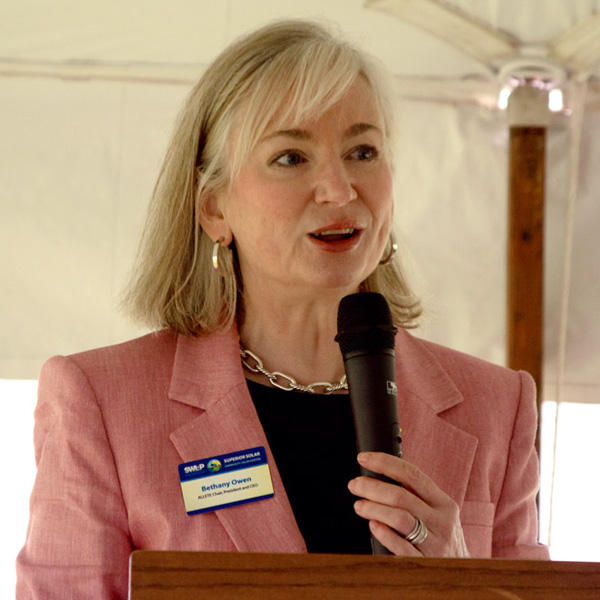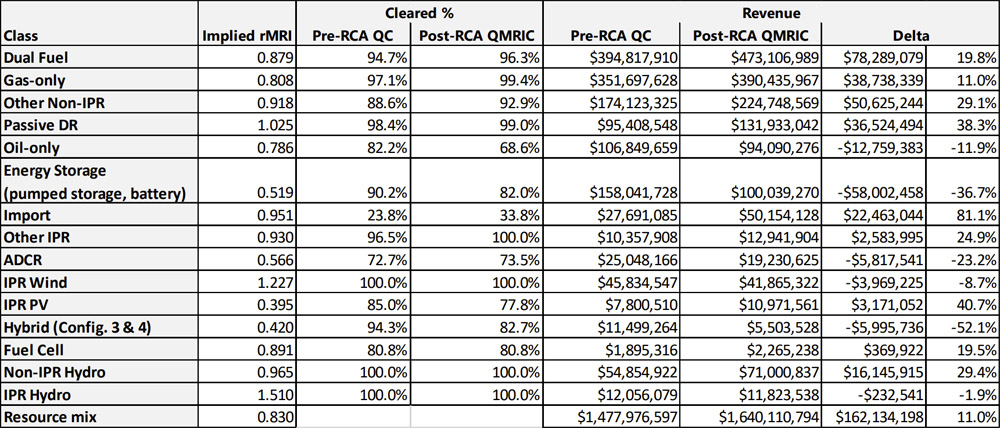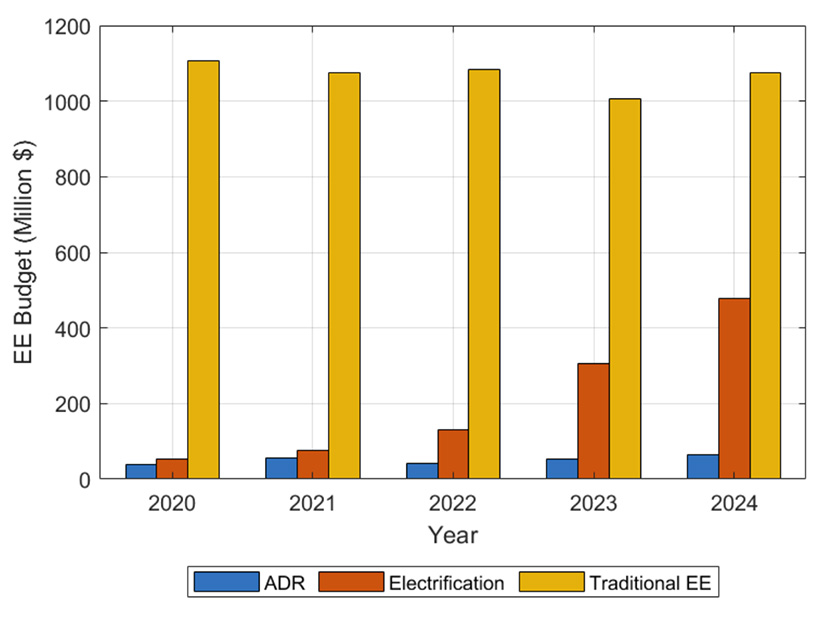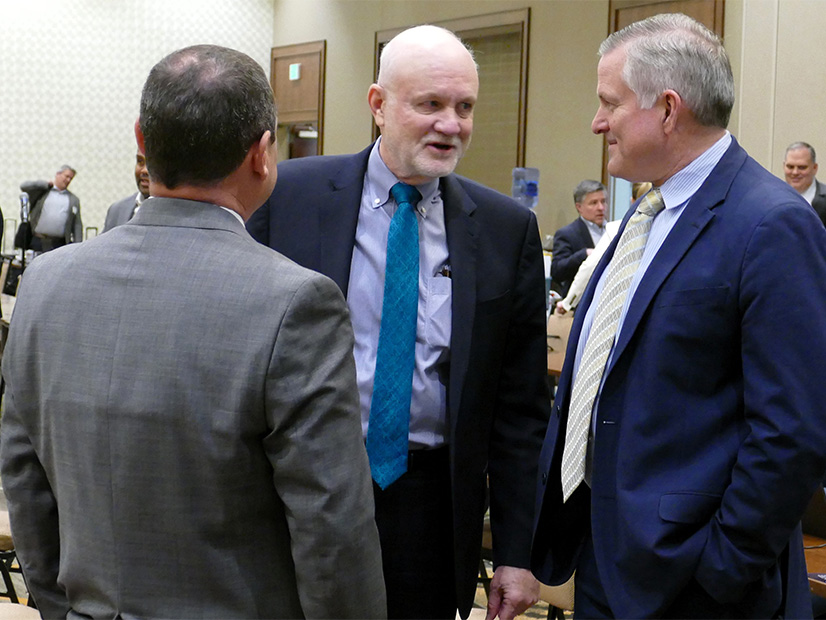Canada’s pension board and a private equity firm intend to buy Duluth, Minn.-based energy company Allete for $6.2 billion, which appears to make some Minnesota regulators apprehensive.
Allete announced May 6 that it entered into an agreement to be acquired by Canada Pension Plan Investment Board (CPP Investments) and Global Infrastructure Partners (GIP). The two would disperse $67/share to shareholders and assume Allete’s debt.
Following the acquisition, Allete would become a private company, no longer traded on the New York Stock Exchange. The sale is scheduled to close next year and requires approvals from shareholders, Minnesota and Wisconsin regulators, FERC, the Federal Trade Commission, and possibly others.
In a press release, Allete CEO Bethany Owen said the transaction would grant Allete “access to the capital we need” to serve customers and hit clean energy targets as the fleet transitions.
“CPP Investments and GIP have a successful track record of long-term partnerships with infrastructure businesses, and they recognize the important role our Allete companies serve in our communities as well as our nation’s energy future,” Owen said. “Together, we will continue to invest in the clean energy transition and build on our 100-plus-year history of providing safe, reliable, affordable energy to our customers.”
Allete’s Minnesota Power, which serves about 150,000 residents and industrial customers across 15 municipalities, must reach Minnesota’s 100% carbon-free electricity mandate by 2040.
Allete also boasts clean energy developer Allete Clean Energy and North Dakota-based wind operator Allete Renewable Resources in addition to BNI Energy in North Dakota; Superior Water, Light and Power in Superior, Wis.; and distributed solar energy developer New Energy Equity.
Owen framed the transition to private ownership as a positive development, allowing Allete to draw on its owners’ financial resources instead of having to issue equity in the markets. She said, “strong partners will not only limit our exposure to volatile financial markets, it also will ensure Allete has access to the significant capital needed for our planned investments now and over the long term.”
CPP Investment Board has about $591 billion Canadian dollars (about $432 billion USD) in assets; it oversees the retirement funds for approximately 21 million Canadians. GIP manages $112 billion with a focus on energy, transportation, digital infrastructure, and water and waste management. GIP is set to provide 60% of the equity to purchase Allete, with CPP Investments providing the remaining equity.
Earlier this year, BlackRock announced it plans to acquire GIP for $3 billion of cash and approximately 12 million shares of BlackRock common stock. That negotiated deal hasn’t been finalized and is awaiting FERC approval (EC24-58). BlackRock already owns 13.55% of Allete.
Minnesota regulators appeared apprehensive of Allete’s reclassification as a private company owned by investment firms during a special planning meeting May 9 discussing the possible sale.
There, Owen emphasized the acquisition wouldn’t mean a change in day-to-day operations or customer rates. In the press release, Allete said its headquarters, leadership, workforce, compensation and charitable contributions would remain undisturbed.
“Allete is a relatively small company doing big, important things,” Owen told regulators, adding that becoming a privately held company will help it raise more than double its current, roughly $3.4 billion market value for new infrastructure projects.
Owen said Allete will file a petition for approval of the sale with the Minnesota PUC and the Public Service Commission of Wisconsin sometime in July.
GIP founding partner Jonathan Bram said he’s certain regulators will thoroughly evaluate the acquisition’s details.
“There haven’t been a lot of acquisitions like this in front of the commission,” Minnesota Public Utilities Commission Chair Katie Sieben said. She asked how the sale would affect Allete’s transparency.
Minnesota Power Vice President of Regulatory and Legislative Affairs Jennifer Cady said even though Minnesota Power wouldn’t have to make SEC filings going forward, transparency would continue through rate cases and FERC Form 1 filings, alongside other FERC filings. Cady also said the PUC could require more reporting as a condition of the sale.
Katherine Hinderlie, manager of the Residential Utilities Division at the Minnesota Office of the Attorney General, said the likely amount of protected data in the sale means there’s a good chance it will become a contested proceeding.
Commissioner Hwikwon Ham said he worried that investor firms could lobby to weaken Minnesota’s “strong” regulatory model.
GIP representatives said they’re happy with Minnesota’s regulatory model and don’t plan to influence changes.
Allete has said that Minnesota Power and Superior Water, Light and Power will continue as “independently operated, locally managed, regulated utilities.”
Minnesota Power is partial owner in a proposal to build the gas-fired Nemadji Trail Energy Center in Wisconsin. Plans for the plant hit a snag in April when the city council of Superior, Wis., didn’t allow necessary zoning changes for construction to begin. (See City Council Vote Stalls Planned Wisconsin Gas-fired Plant.)
After announcing its sale, Allete canceled its first-quarter earnings call, scheduled for May 9.
In the press release, GIP CEO Bayo Ogunlesi said it and CPP Investments “look forward to partnering to provide Allete with additional capital so they can continue to decarbonize their business to benefit the customers and communities they serve.”
“Bringing together Allete, with its demonstrated commitment to clean energy, with GIP, one of the world’s premier developers of renewable power, furthers our commitment to serve growing market needs for affordable, carbon-free and more secure sources of energy,” Bayo said.
Concerns over the BlackRock Connection
The announcement doesn’t sit well with a nonprofit consumer advocate. Public Citizen Energy Program Director Tyson Slocum said the pending sale of GIP to BlackRock means that BlackRock — “a totally different animal” — would be the one to acquire Allete.
Public Citizen said it plans to lodge a protest with FERC over BlackRock’s takeover of GIP considering the Allete deal.
Allete would “lose significant transparency” under its new ownership, Slocum predicted, and could be “consumed into BlackRock’s black box” if the world’s largest asset manager successfully obtains GIP.
Slocum said he expects GIP and CPP Investments to agree to short-term commitments along the lines of reducing rates, shielding customers from transaction costs and possibly decarbonizing Allete’s fleet faster. However, he said impacts in the long run are murkier and entirely up to the new owners.
“The long-term issue of the utility going private can’t be undone. That’s the big issue here,” Slocum said in an interview with RTO Insider. “If BlackRock is ultimately the owner, they can do whatever they want with their asset. This is a really, really serious move by BlackRock. Whatever assurances the companies are giving, you’re losing transparency at the holding company level.”
Slocum said SEC filings are not on par with FERC Form 1 filings, with the former occurring at the holding company level while the latter are at the franchised utility level. Comparing detailed SEC disclosures to FERC and state filings is a “tired talking point that is factually inaccurate,” he said.
Slocum said nothing is stopping the new ownership from creating numerous LLCs to obscure investment decisions. It could have state commissioners playing “whack-a-mole” trying to regulate financial activities, he said.
Slocum said he worried that investor firm ownership would trade the existing influence of everyday shareholders to the “wealthiest 1% of the planet.” He noted only a handful of utilities with captive service areas are privately controlled, including Puget Sound Energy, El Paso Electric, Cleco and Duquesne Light Co.
Slocum recommended the Minnesota PUC require BlackRock representatives attend upcoming meetings.
“Missing at that conference today was BlackRock,” he said of the PUC’s special planning meeting. “It looks like state regulators haven’t wrapped their heads around this. Whatever hearing Minnesota has next, they must have BlackRock there.”
BlackRock thus far has styled itself to FERC as a passive minority holder of utilities, Slocum said, and ownership of GIP would change that. He said federal agencies might consider splitting BlackRock in two so it can maintain both passive and active ownership of utilities.
“I have no idea how you navigate that unless you force a divesture,” Slocum said.
Slocum also said BlackRock should abstain from the shareholder vote for GIP and CPP Investments to acquire Allete. Although BlackRock currently owns shares, participating in the vote would constitute a “clear conflict of interest” given its expected purchase of GIP.



